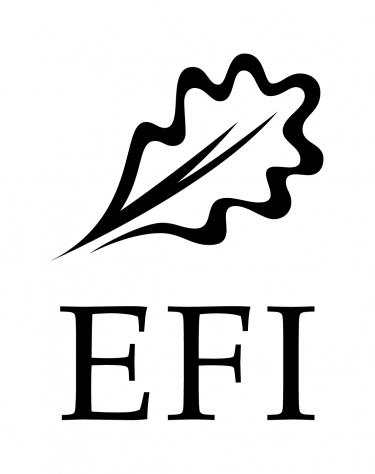Multidisciplinary approach needed to create new wildfire strategies

In a seminar organised by the EFI Mediterranean Facility, held at Sant Pau Art Nouveau site, Barcelona, on 11 February 2019, European Commissioner for Humanitarian Aid & Crisis Management, Christos Stylianides, declared that the EU must serve as a pillar of solidarity for citizens facing natural disasters.
To tackle this enormous risk, the EU has introduced rescEU, a European initiative to safeguard citizens against wildfires. RescEU will be a new organisation for preparedness and response in disaster risk management, where multilateralism and cooperation are the key factors. RescEU also intends to build a new culture of prevention fostering training and exchange of best practices in emergency management.
Cooperation between different DGs and the use of EU funds to deal with this problem more efficiently will be translated into support, including for better forest management, wider communication and public awareness about forest fire risk and use of innovative observation and monitoring tools, as well as an EU Emergency Response Coordination Centre.
Ms. Ángela Iglesias, from the Spanish ministry of Agriculture, Fisheries and Food and expert in the European Civil Protection Assistance Mechanism, agreed with Mr. Stylianides about the need for more multidisciplinary meeting points for professionals, where foresters can meet experts and stakeholders from other disciplines. She also stressed the need for fresh approaches in dealing with fires looking at the roots of the problem. In this context, she announced the support of the Spanish Ministry of Agriculture for a Forest Fire Risk Facility at EFI, part of a broader European Forest Risk Facility.
Round table discussion
These interventions were followed by a round table with four leading Spanish experts on forest fires who presented the lessons learnt during recent years in research, landscape management and firefighting.
Mercedes Guijarro, Head of Forest Fires Laboratory, INIA-CIFOR, Ministry of Science, Innovation and Universities, highlighted key topics for wildfire research. These included considering landscape rather than species flammability, including the seasonal component of forest fuels and using quasi-real scale lab tests to produce decision-making systems to manage vegetation. Further important topics are experimental burning to assess crown fire models obtained in other non-Mediterranean ecosystems, improving knowledge on long term effects of prescribed burning and adopting a multi-risk approach.
Victoriano Ramon Vallejo, Professor at University of Barcelona summarised findings of a recent EU publication analysing results of two decades of European research. We are in a moment of transition from previous land uses, with fires behaving differently on different land uses and occurring in new areas where they were previously absent, where vegetation shifts could occur. It is essential that the practitioner consider fire risk when managing forests and land managers must adopt preventive alternatives to fuel management, also incorporating fire risk in urban planning as wildland-urban interfaces become riskier. He called on forest managers to build fires-resistant and fire-resilient landscapes using plant adaptation as a natural model and on authorities to prepare citizens: people should know how to behave during fires events. Echoing earlier sentiments, he agreed that integrated fire management is vital to provide a framework that considers all aspects related to managing ecosystems.
Marc Castellnou, Head of the Catalan Government’s Forest Action Support Group (GRAF), reinforced the same message. In order to be able to face megafires, we need resilient, well-prepared landscapes: fire fighters do not need more resources and, even if they had them, they cannot fight mega-fires. Current mega-fires release so much energy that they generate fire storms which affect the weather and favour conditions for ongoing fires nearby. Fire-fighting efforts actually preserves forest fuel, so current fires have more wood to burn.
If fire fighters are to maintain even their current capacity for fighting fires, it is the landscapes that must change. Fire fighters can do their job if forests release less energy when burning and this requires preventative forest management. Reducing fuel load should be a task performed by forest management, not by forest fires.
The final speaker on the panel, Ana Morgado, Head of Forest Restoration from the Diputació de Barcelona (DIBA), presented the legal framework of fuel reduction in the wildland-urban interface implemented by the Catalan government during recent decades. DIBA recognised that maintaining protection strips around settlements will not suffice to protect people from megafires and is placing increased attention on forest management surrounding settlements.
Open debate
Possible solutions to these issues emerged in the ensuing debate, moderated by Inazio Martinez de Arano, Head of EFI Mediterranean Facility. These included the diversification of strategies through a social contract, in order to involve society in managing forest fire risk. People should be responsible for the landscape in which they live, and this social contract could be an empowerment tool for rural communities. There is enough knowledge in science to start managing the forests to create more resistant and resilient landscapes. Authorities must stay updated about forest fire behaviour evolution, as these changes should affect the advice they give to people in case of emergency, including to tourists. Finally, all panellists agreed that more implication from public administrations is required, especially from finance departments, which have the power to distribute public budgets.
Towards a Forest Fire Risk Facility
Closing the event, Inazio Martinez de Arano said that EFI is taking action to address this crucial issue for our times. He thanked the Spanish and German Ministries, Generalitat and DIBA for their support and announced the creation of a fire component within the European Forest Risk Facility, to connect and multiply existing expertise and knowledge through mutual exchange and support via a network of institutions, organisations and individual experts.
More information on the development of the Forest Fire Risk Facility will be available via EFI channels in the near future.


